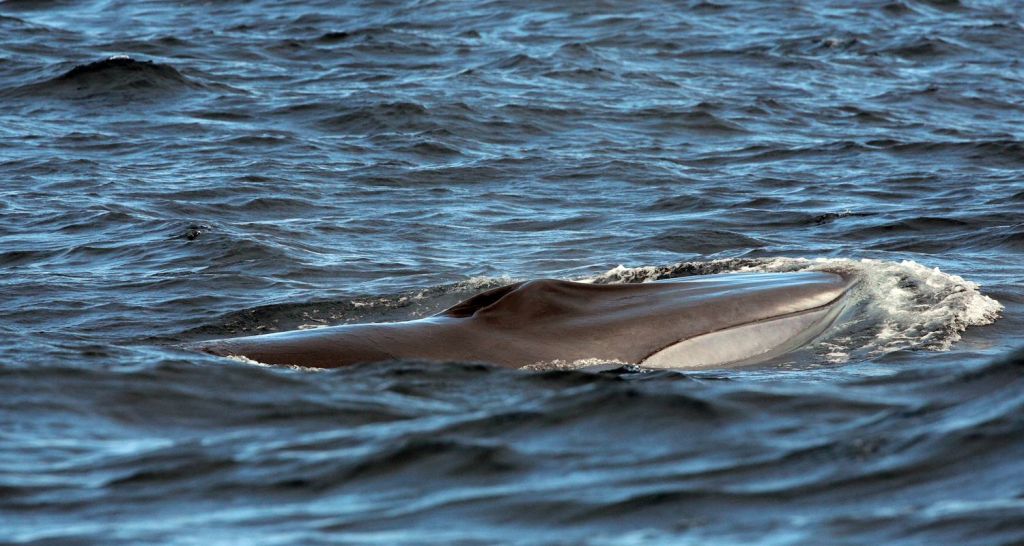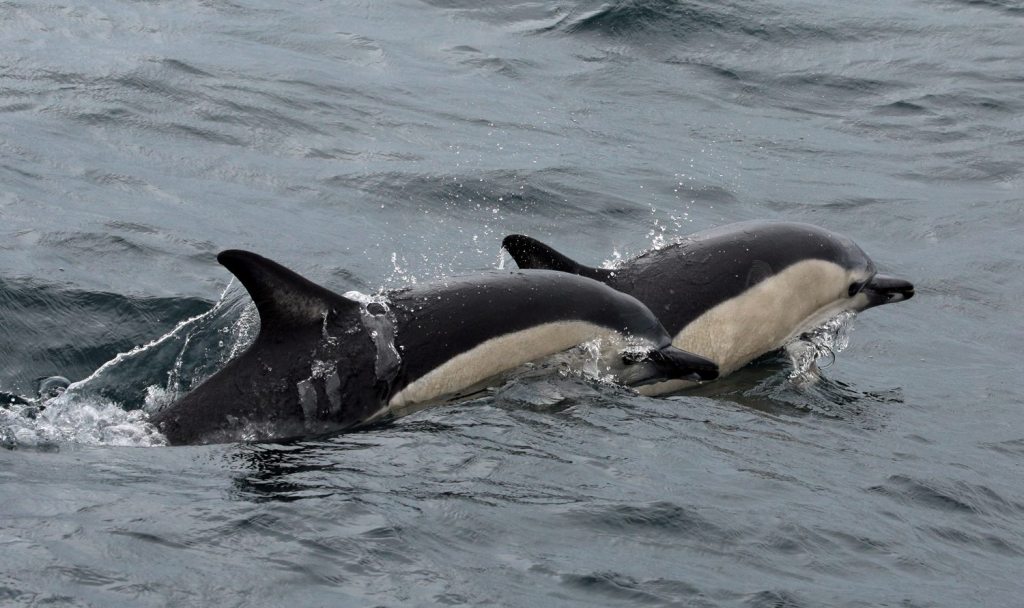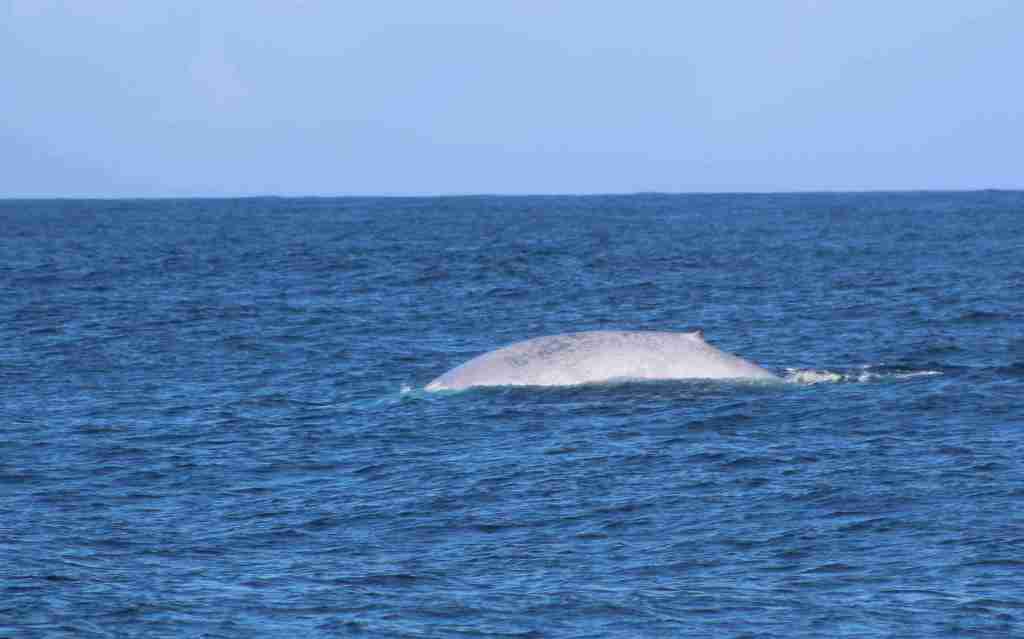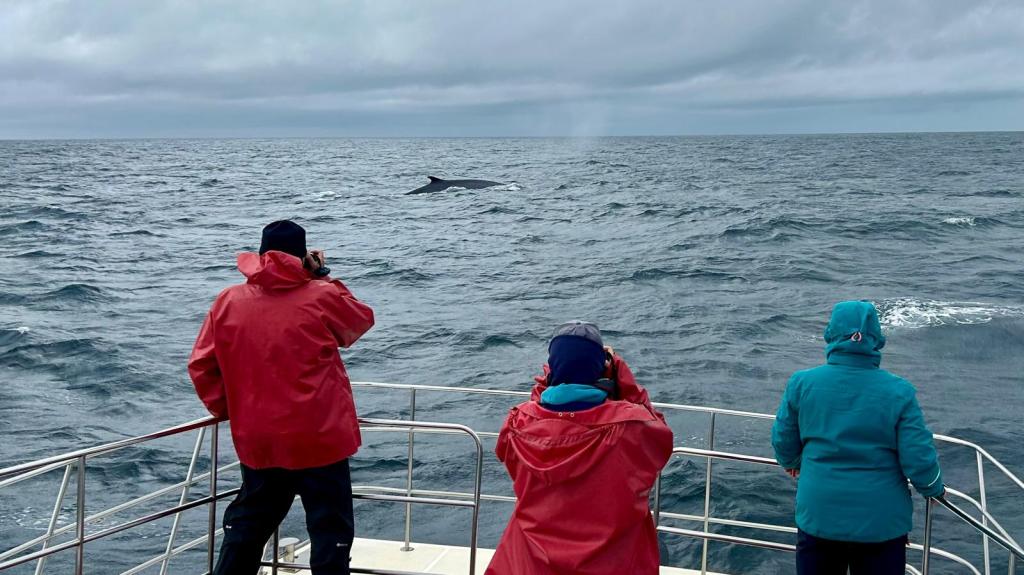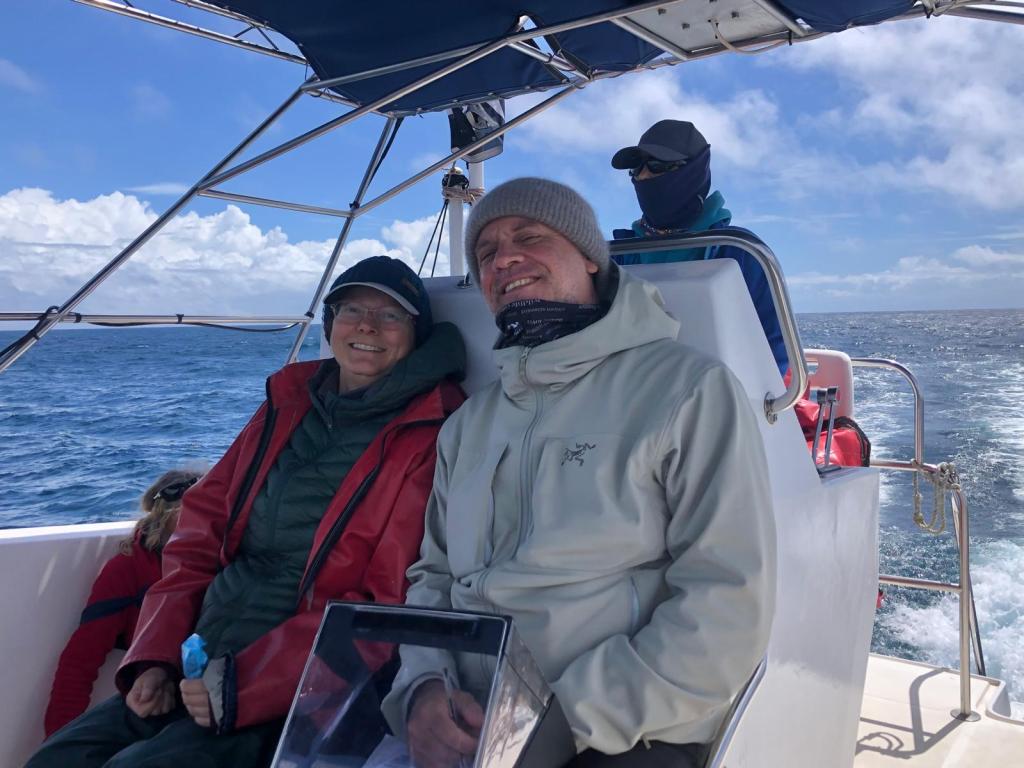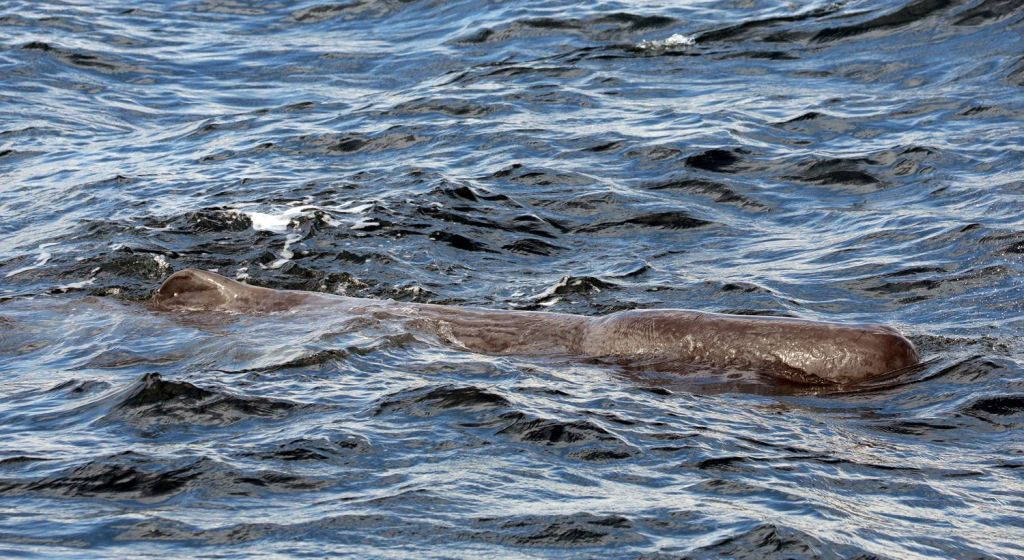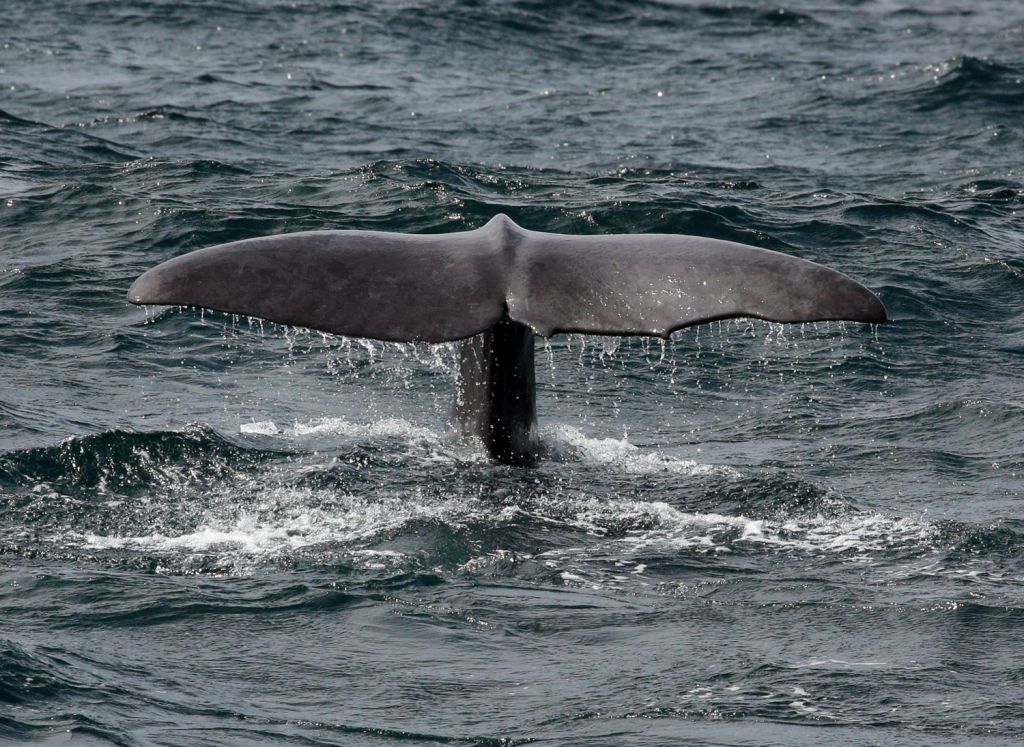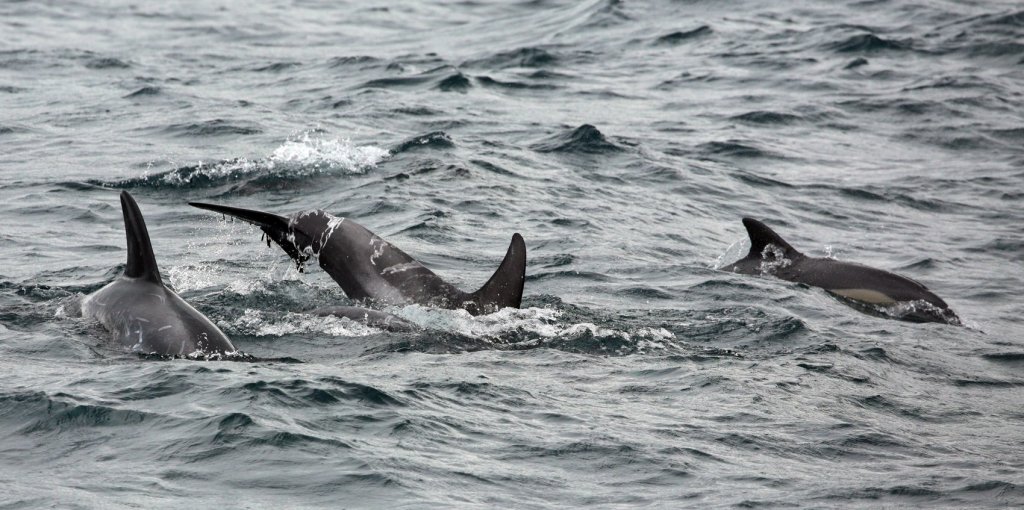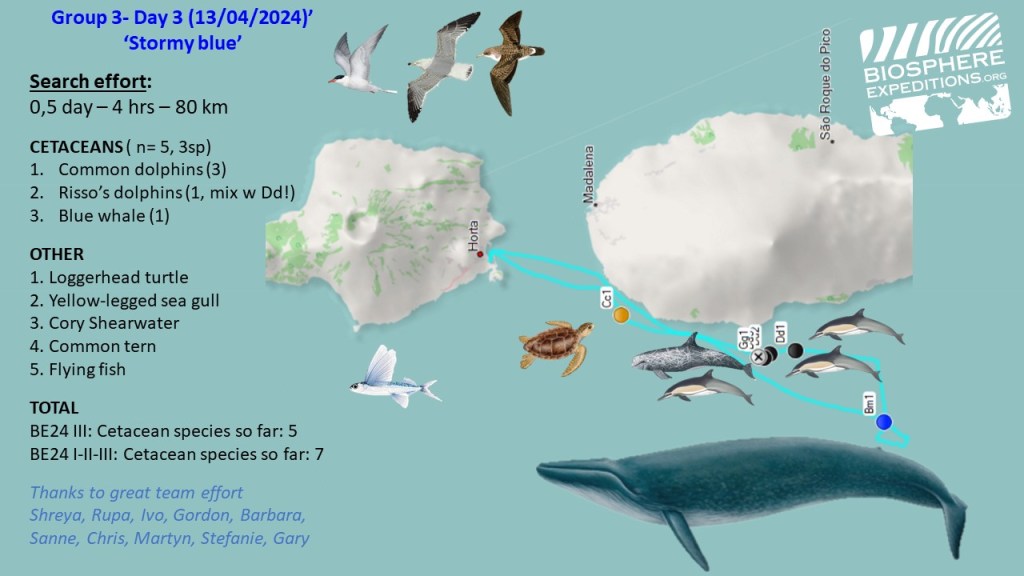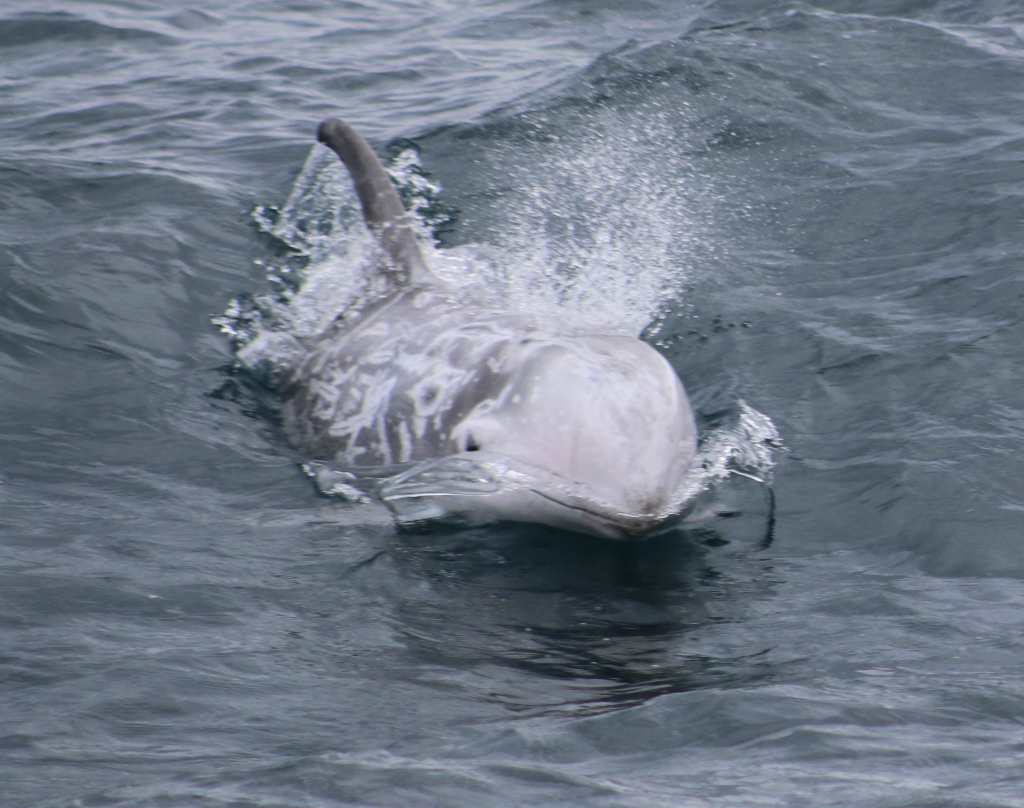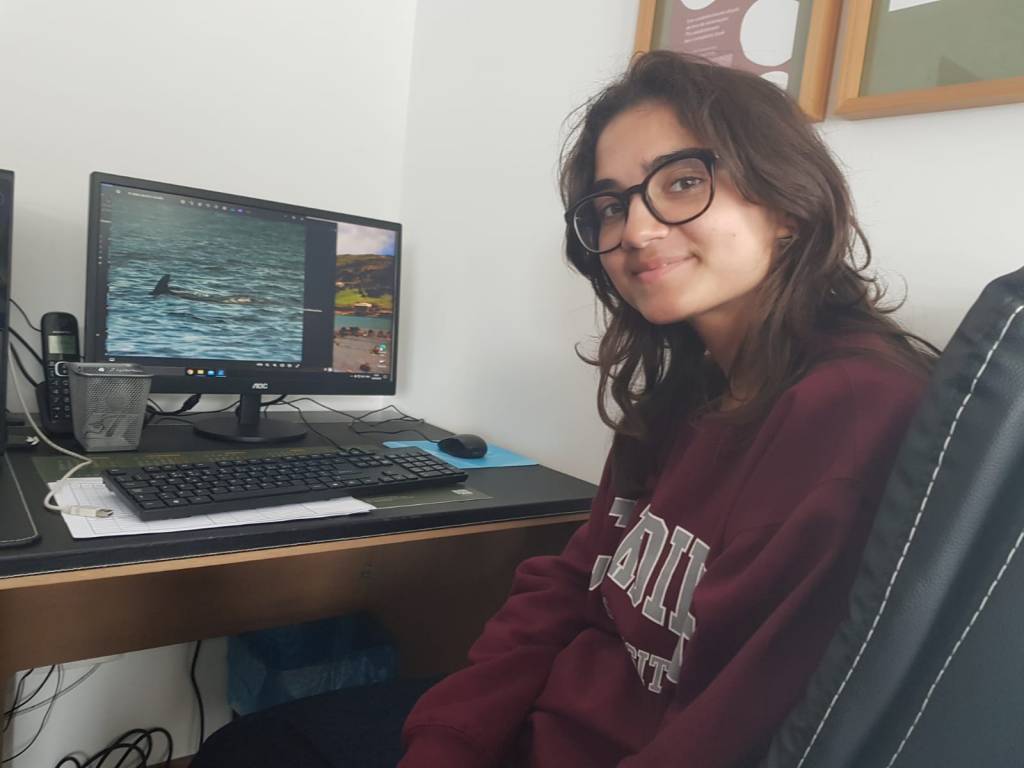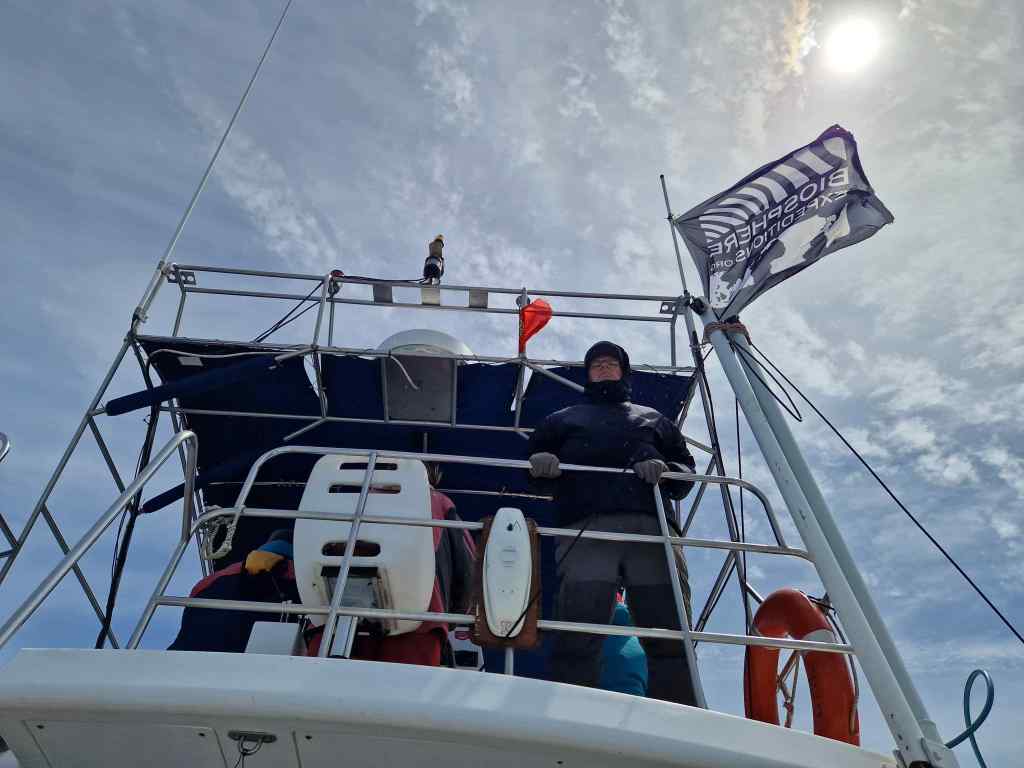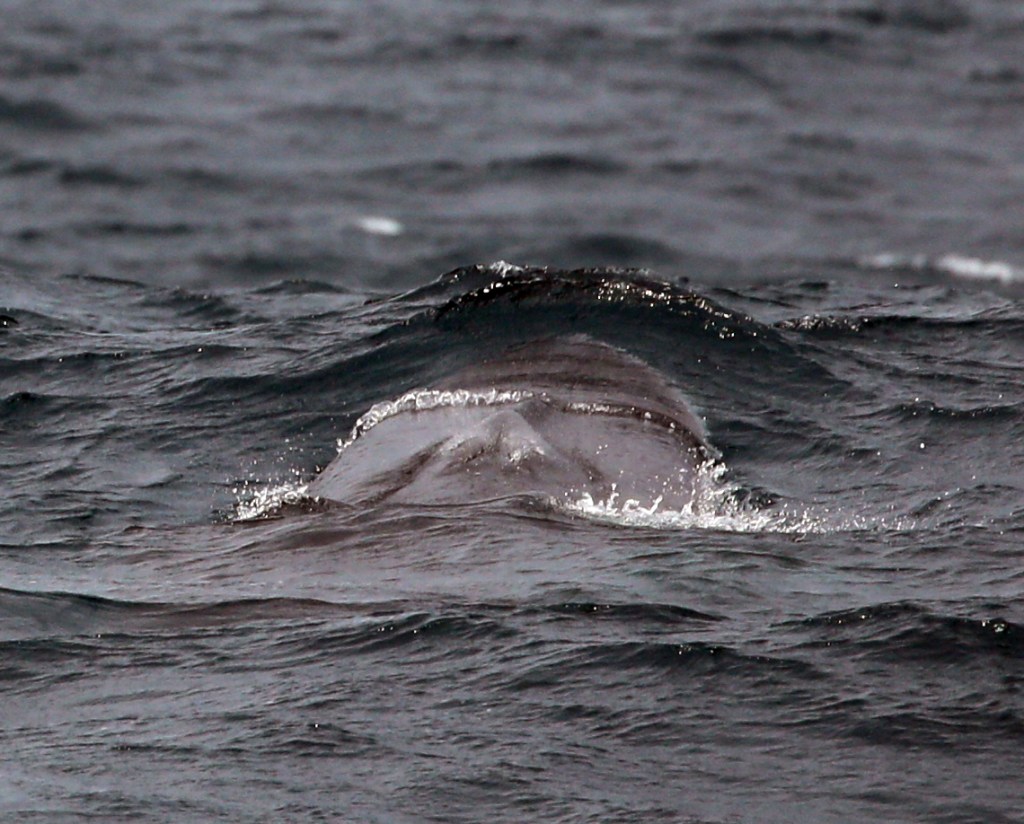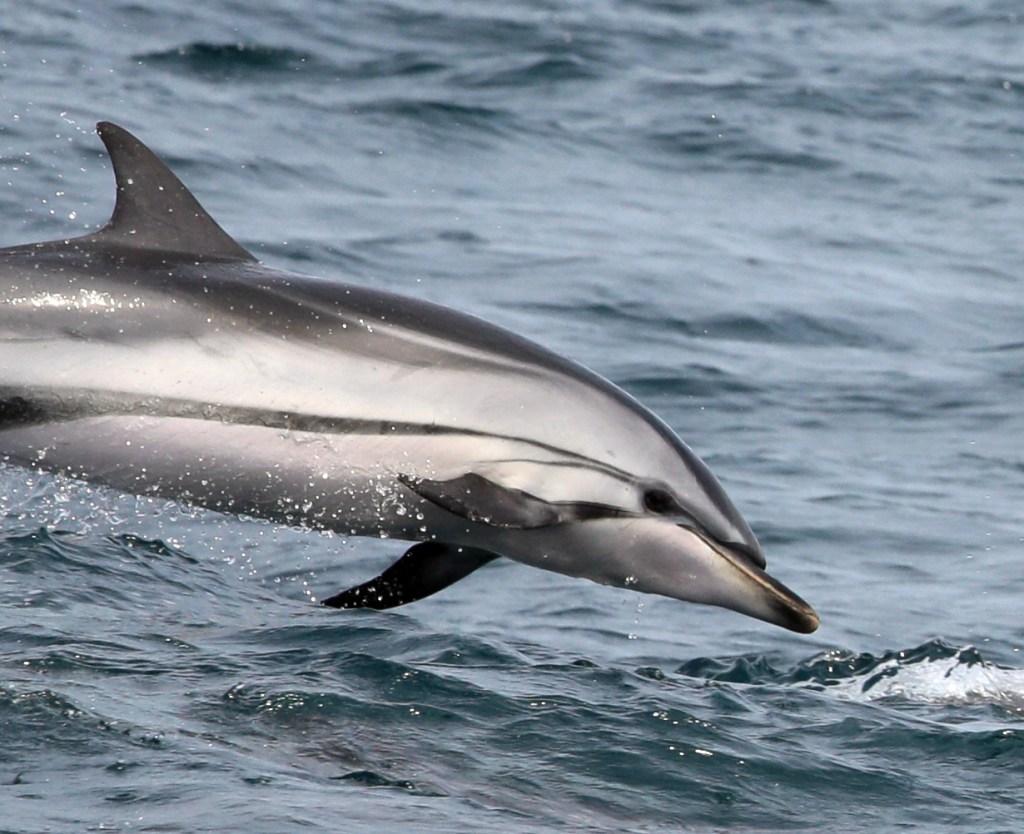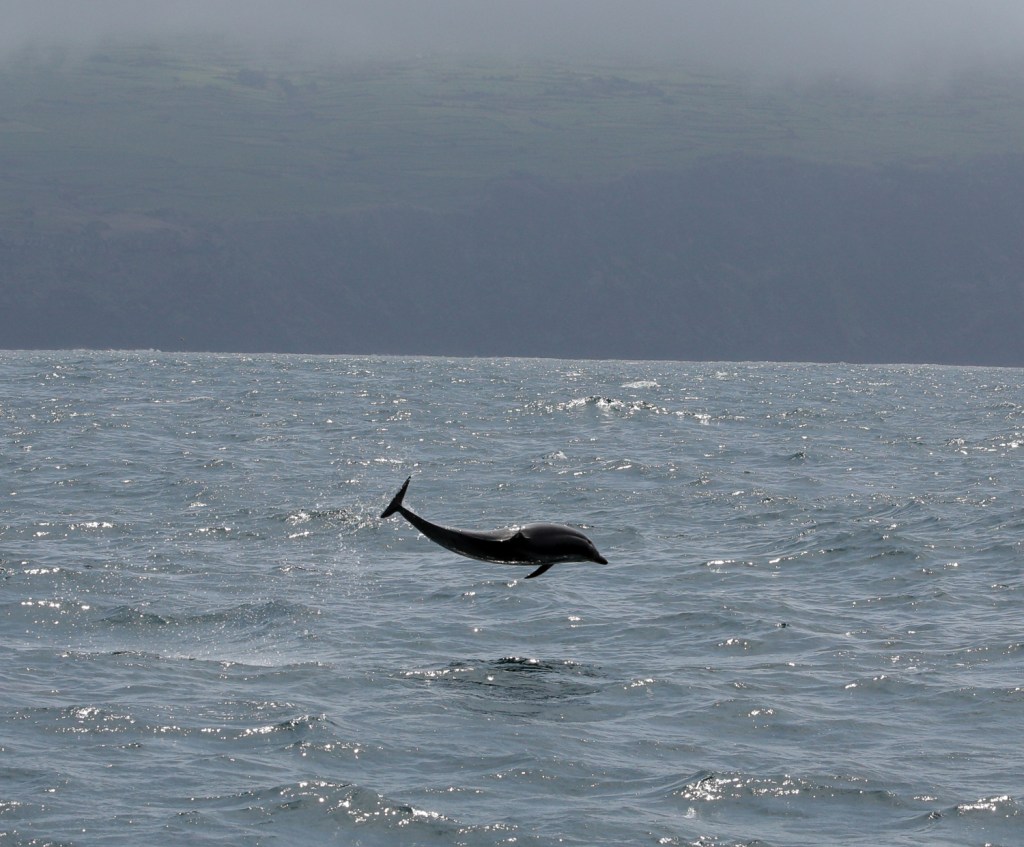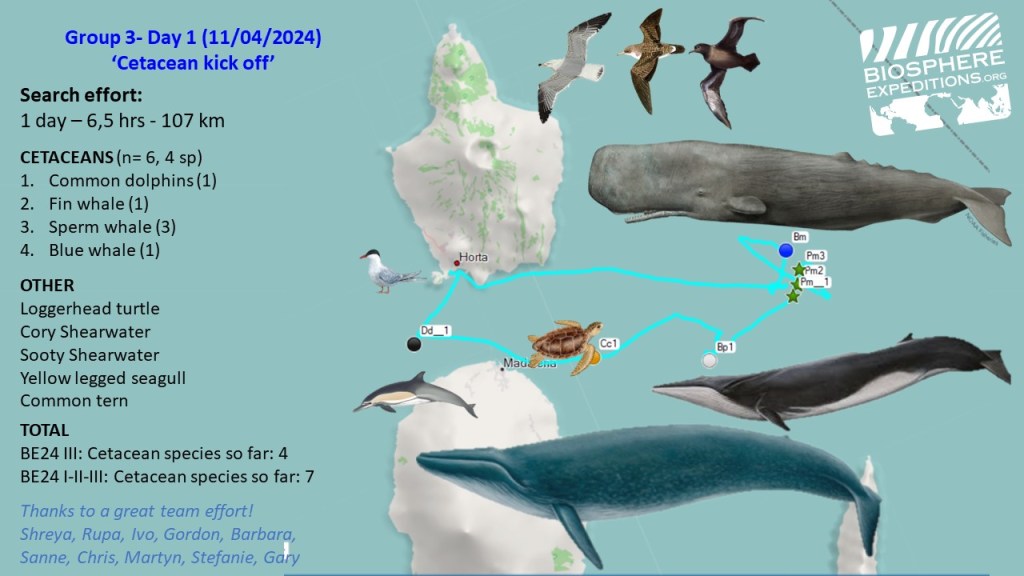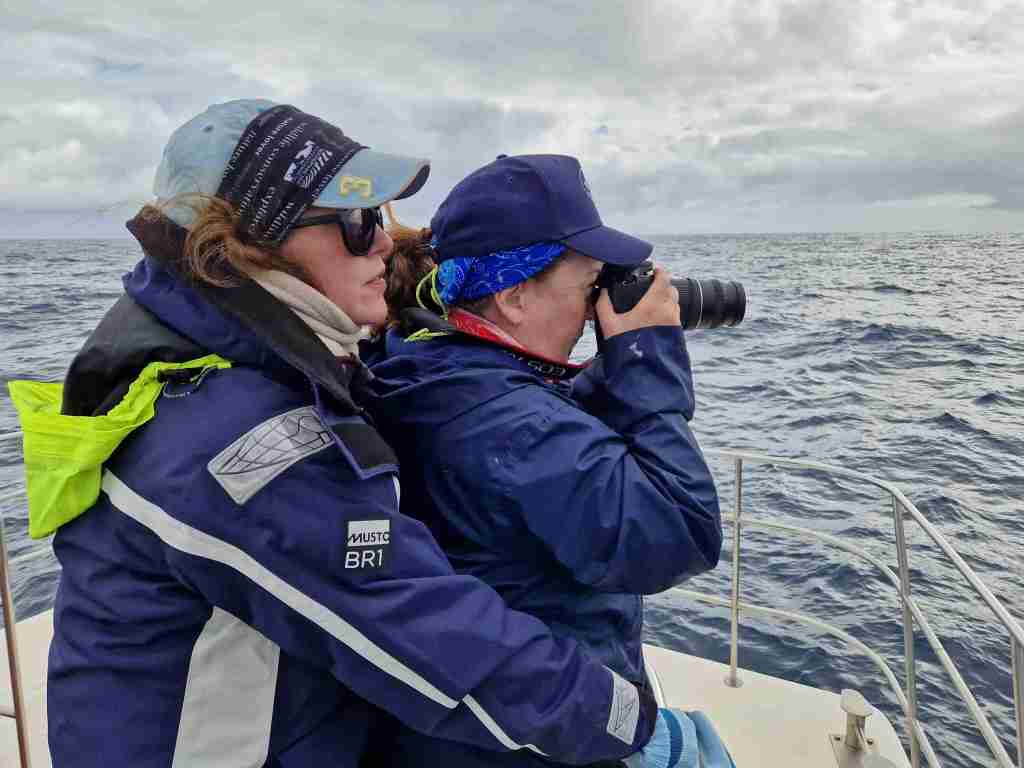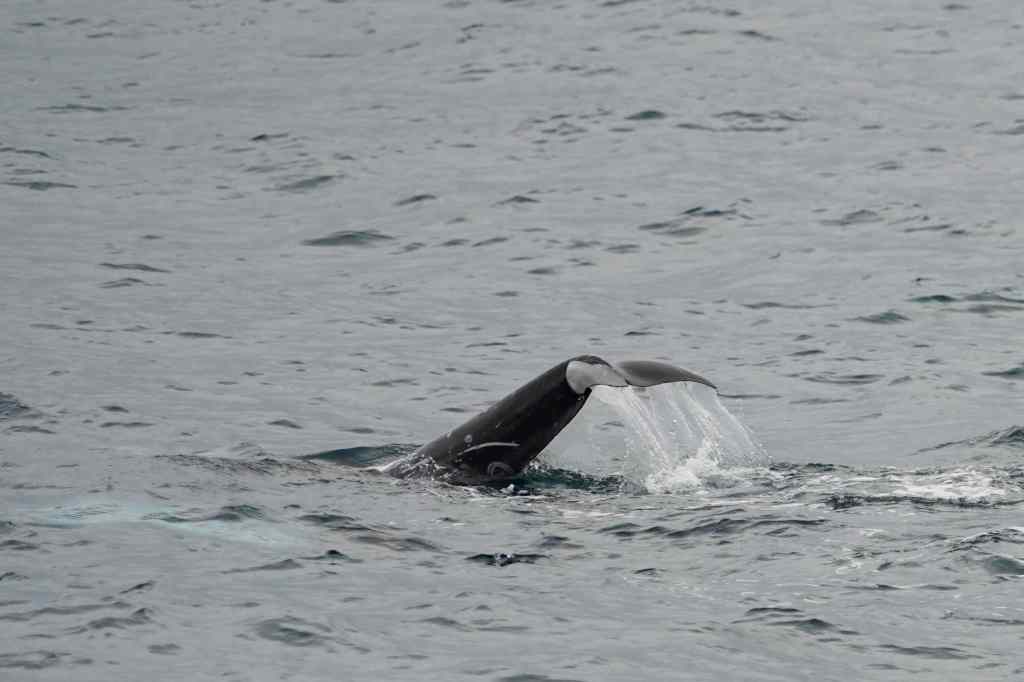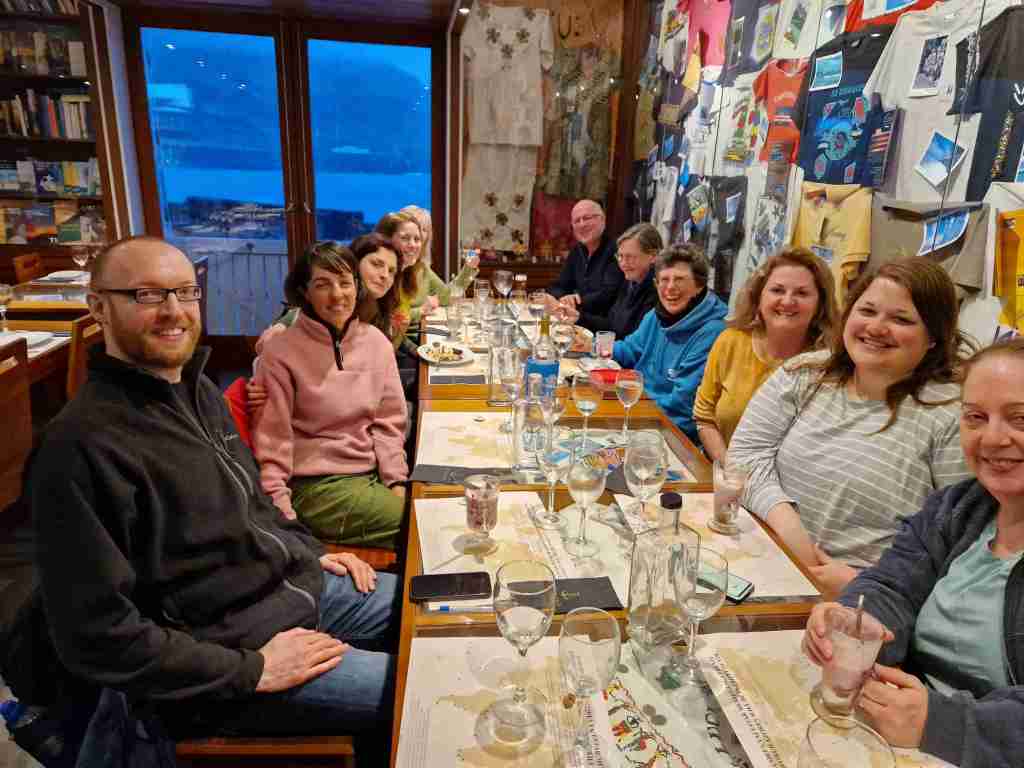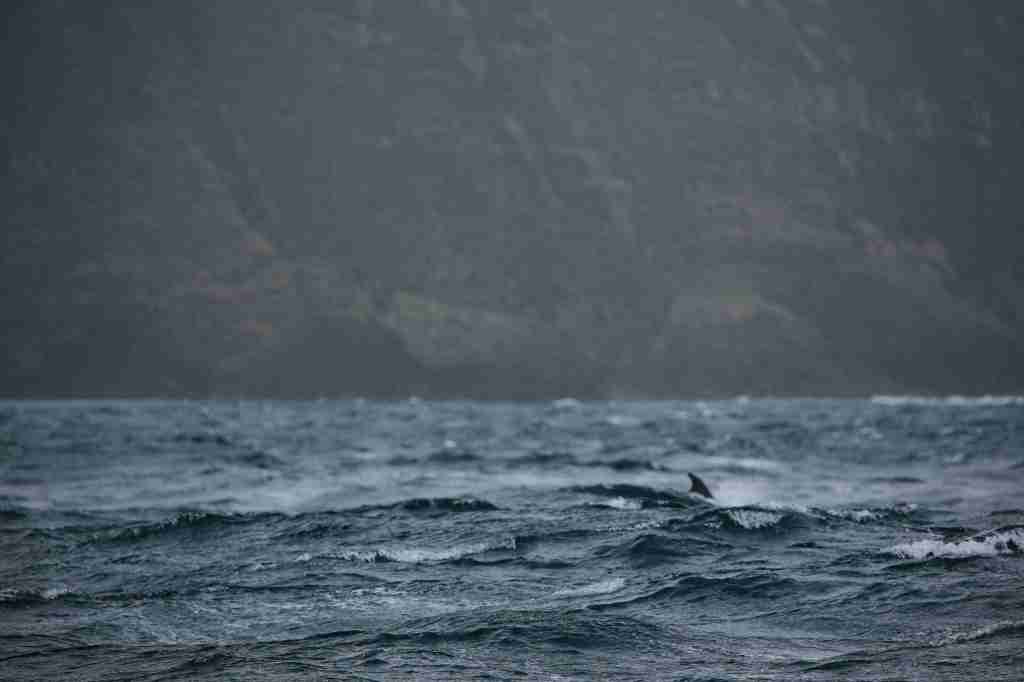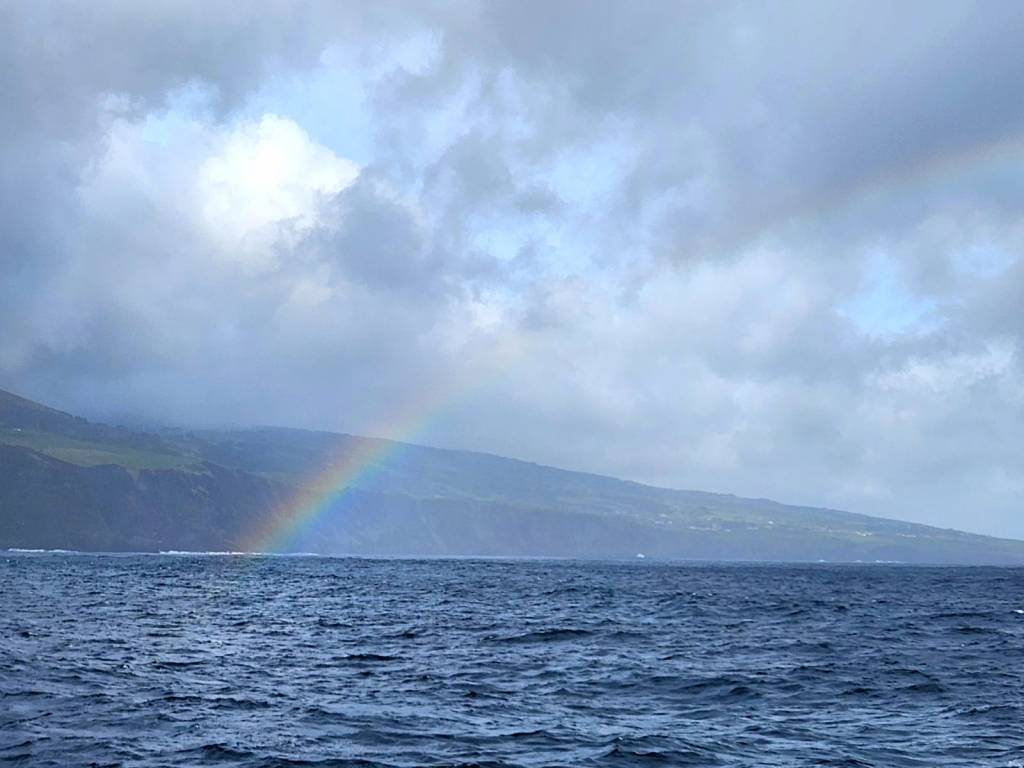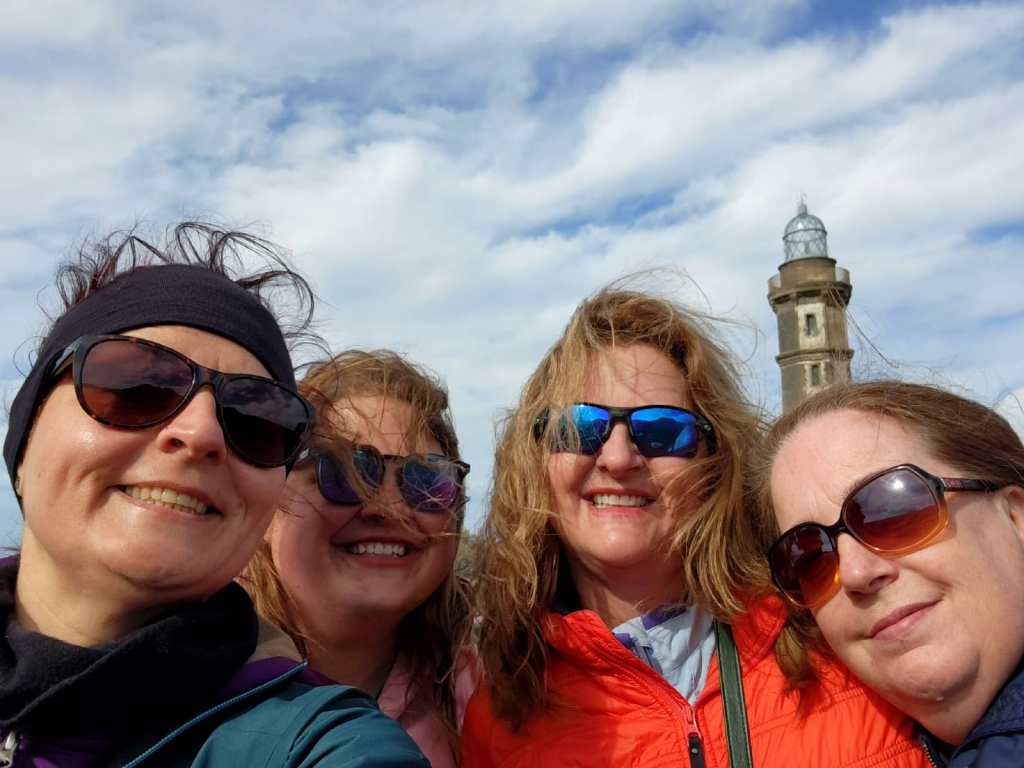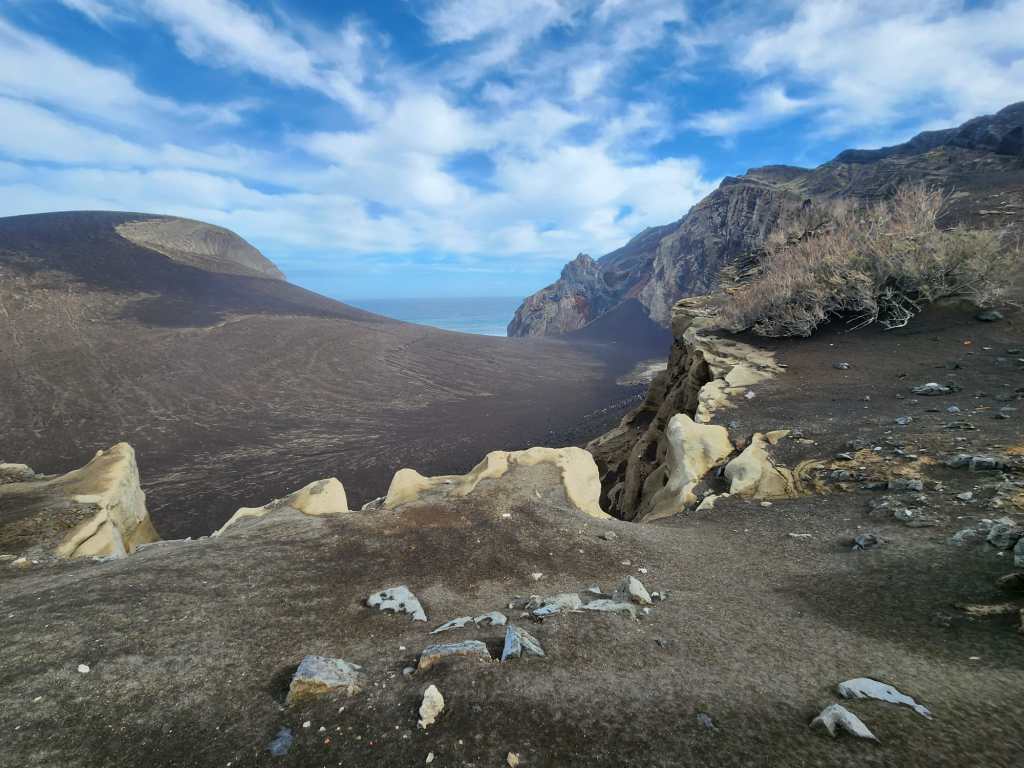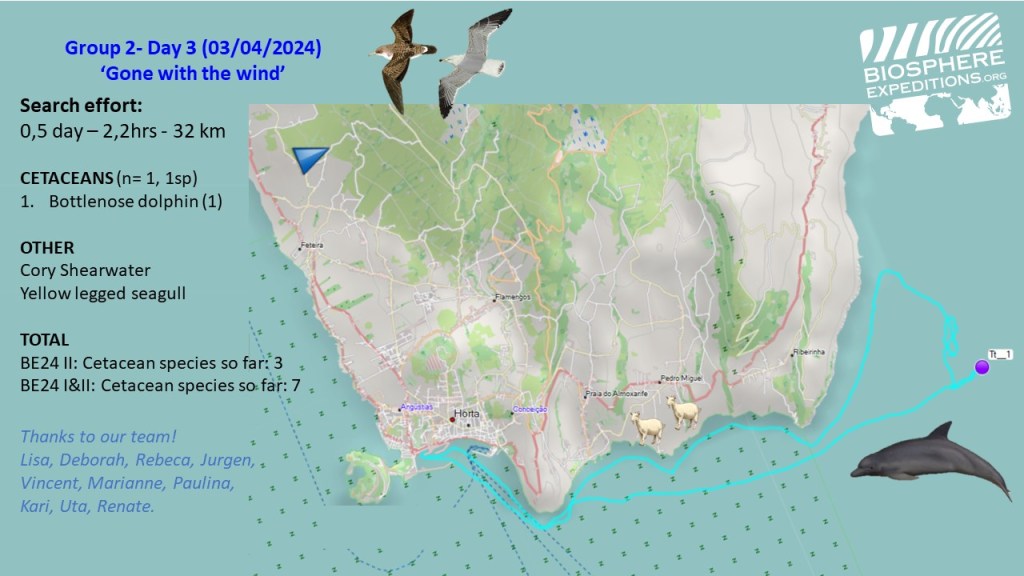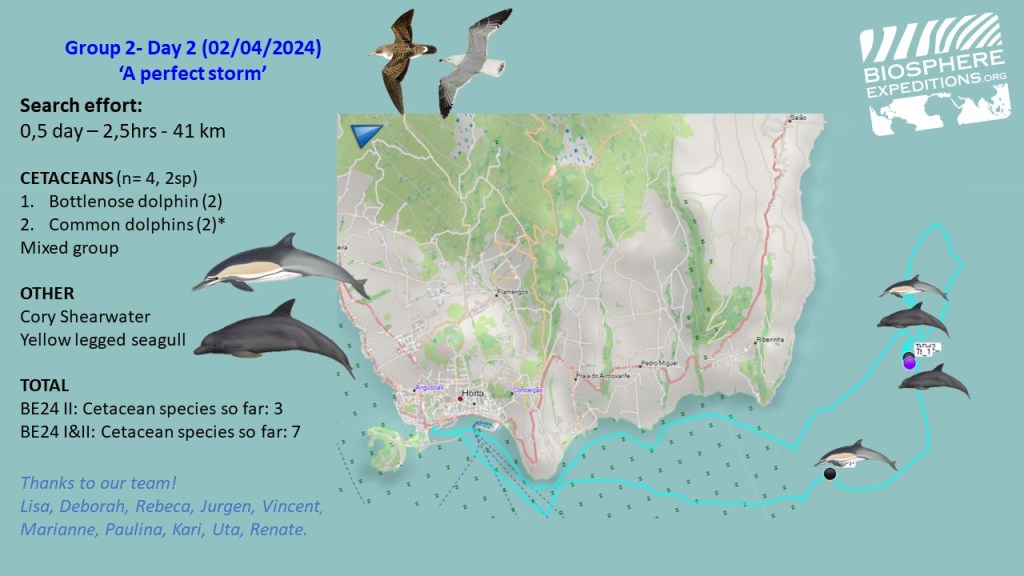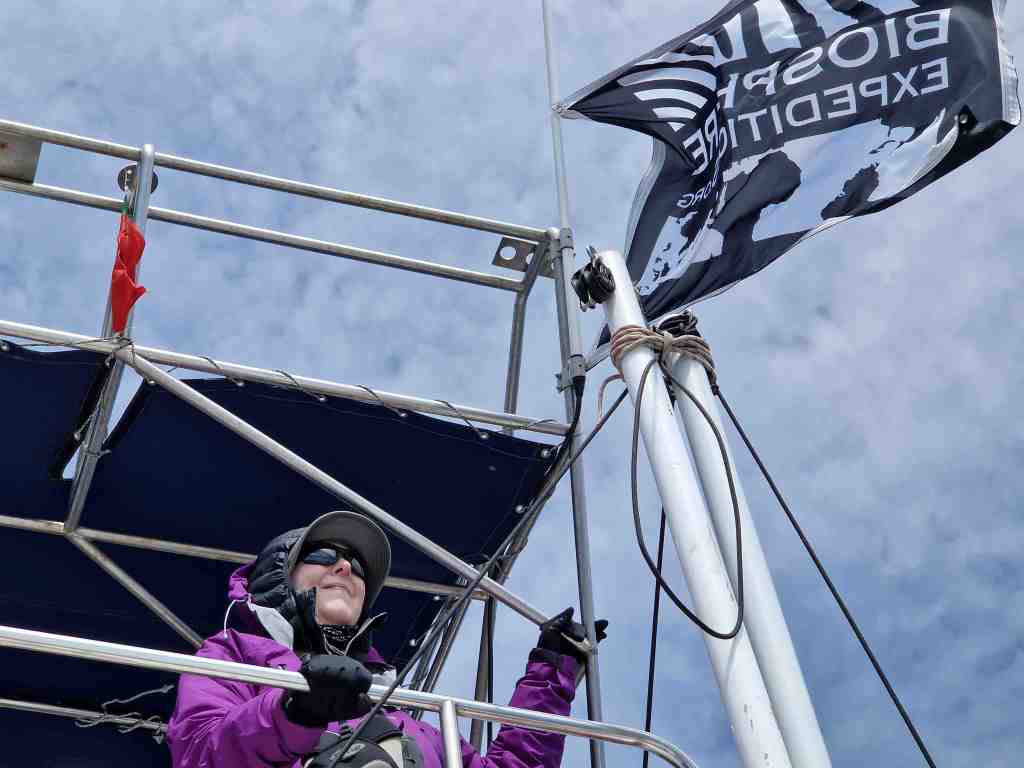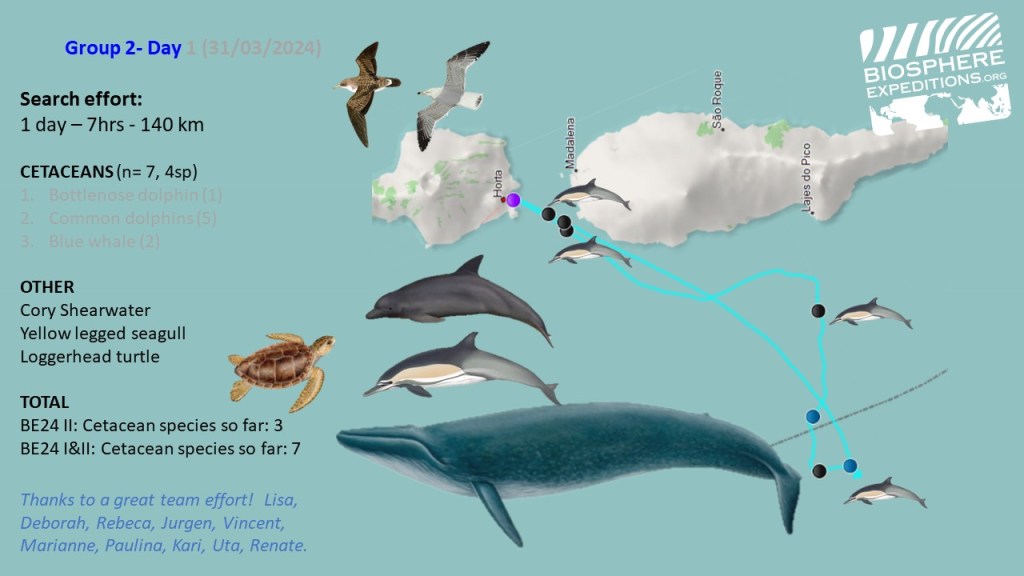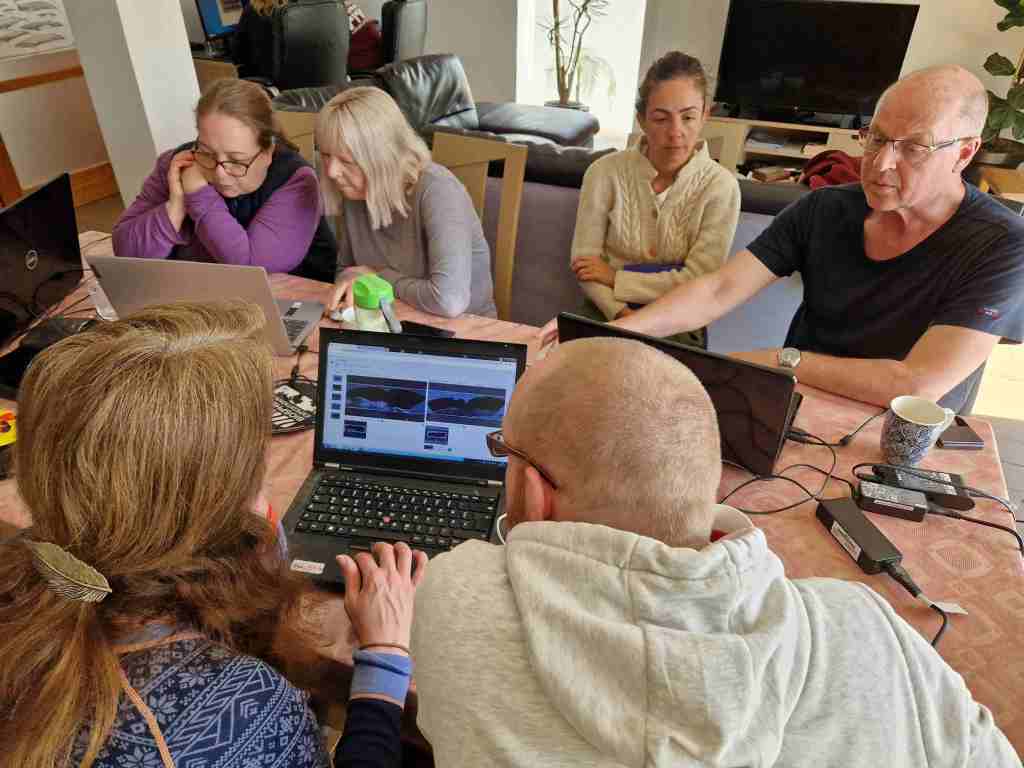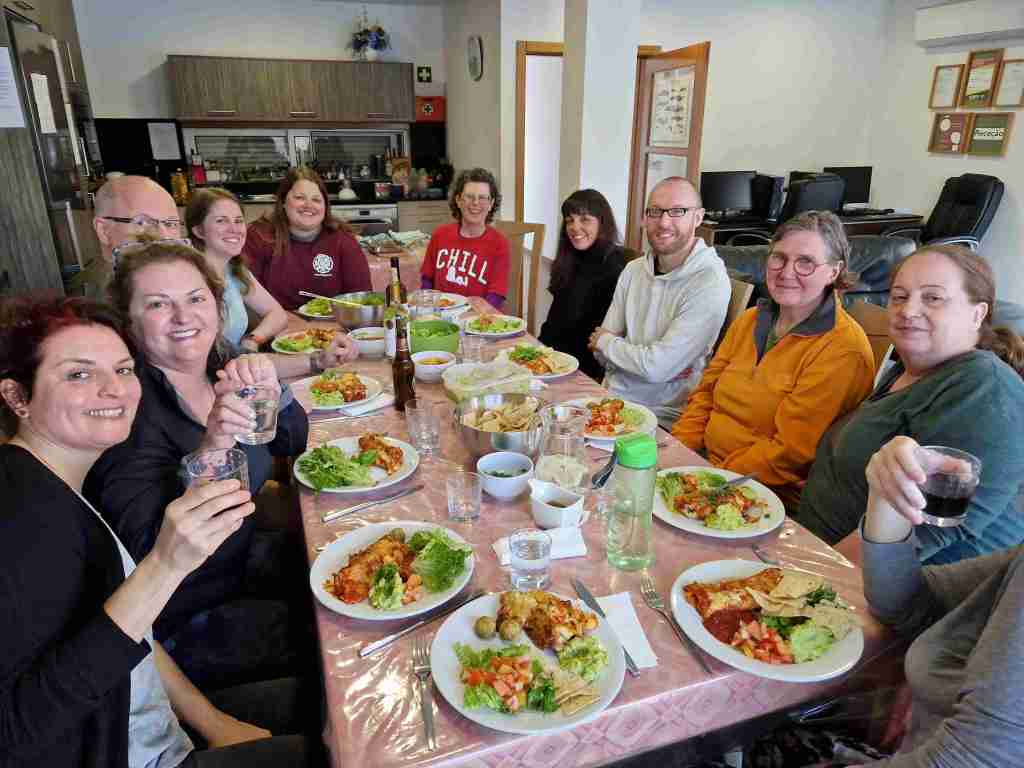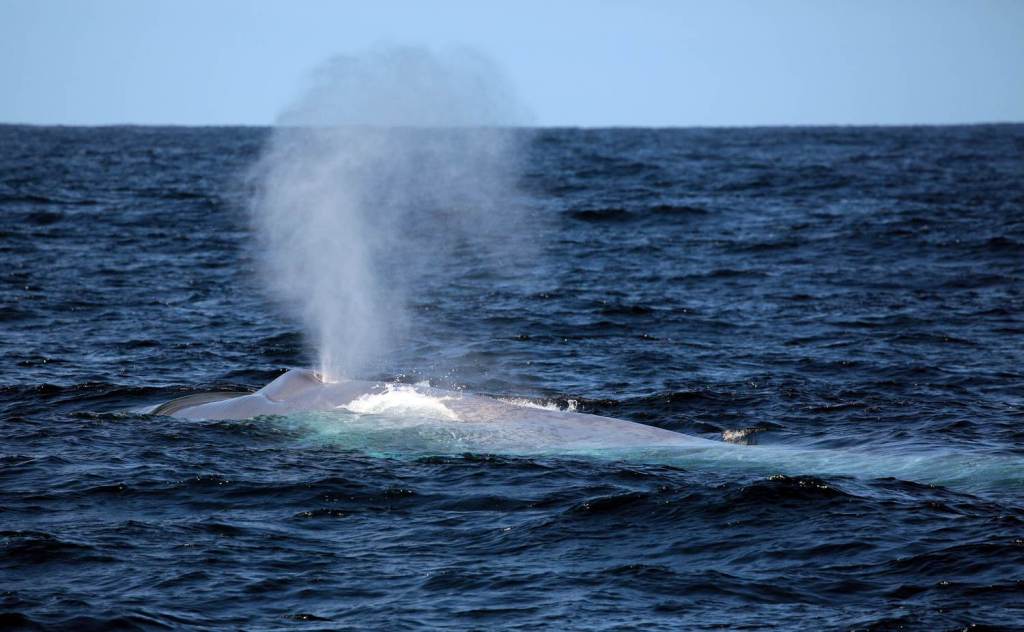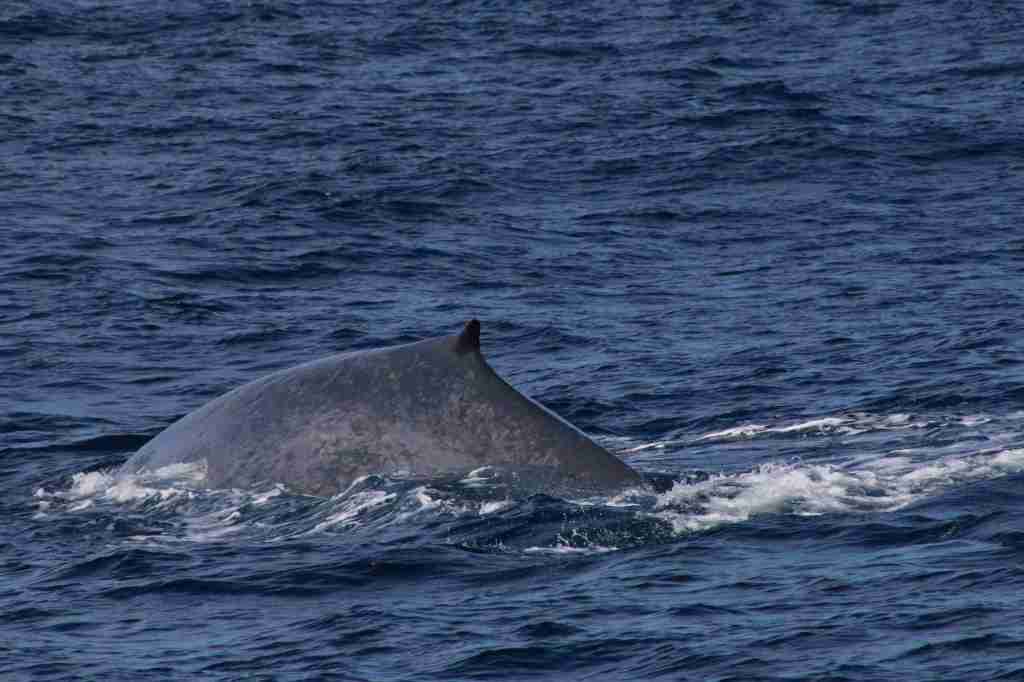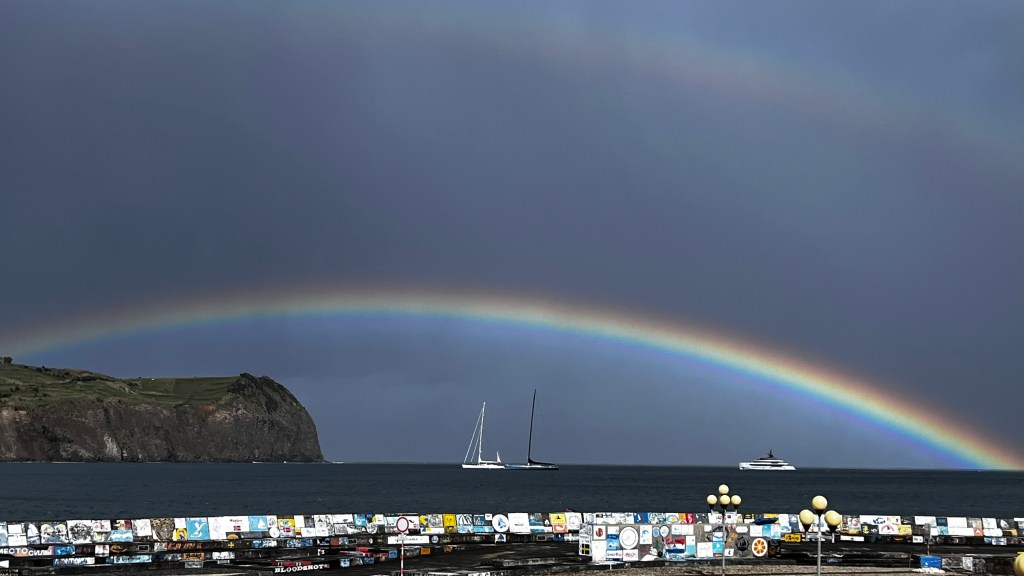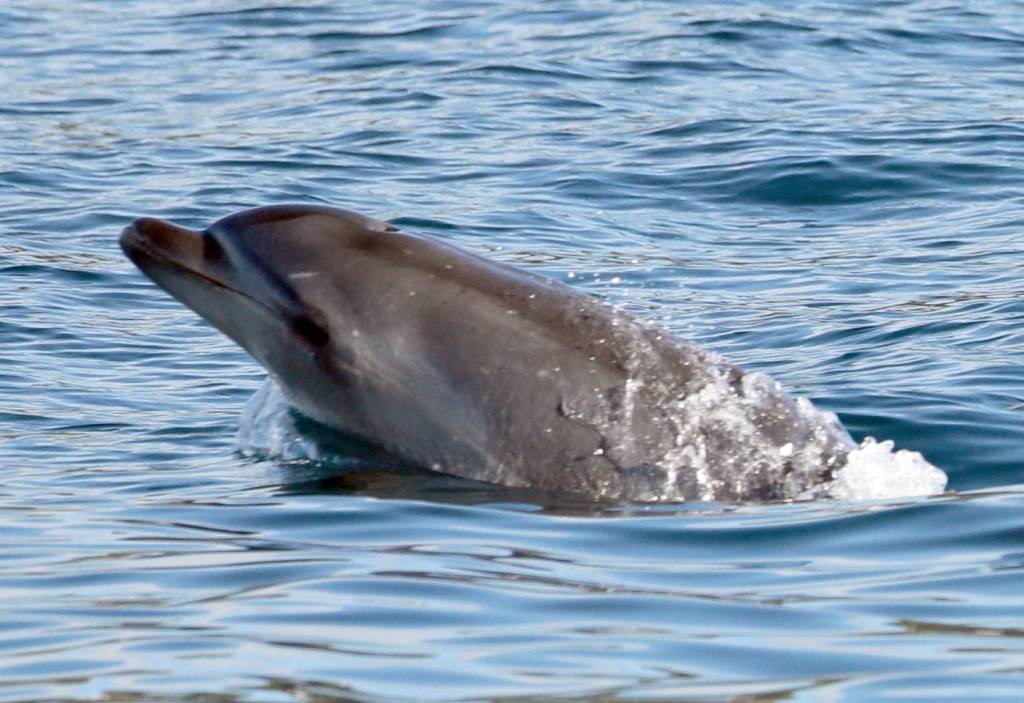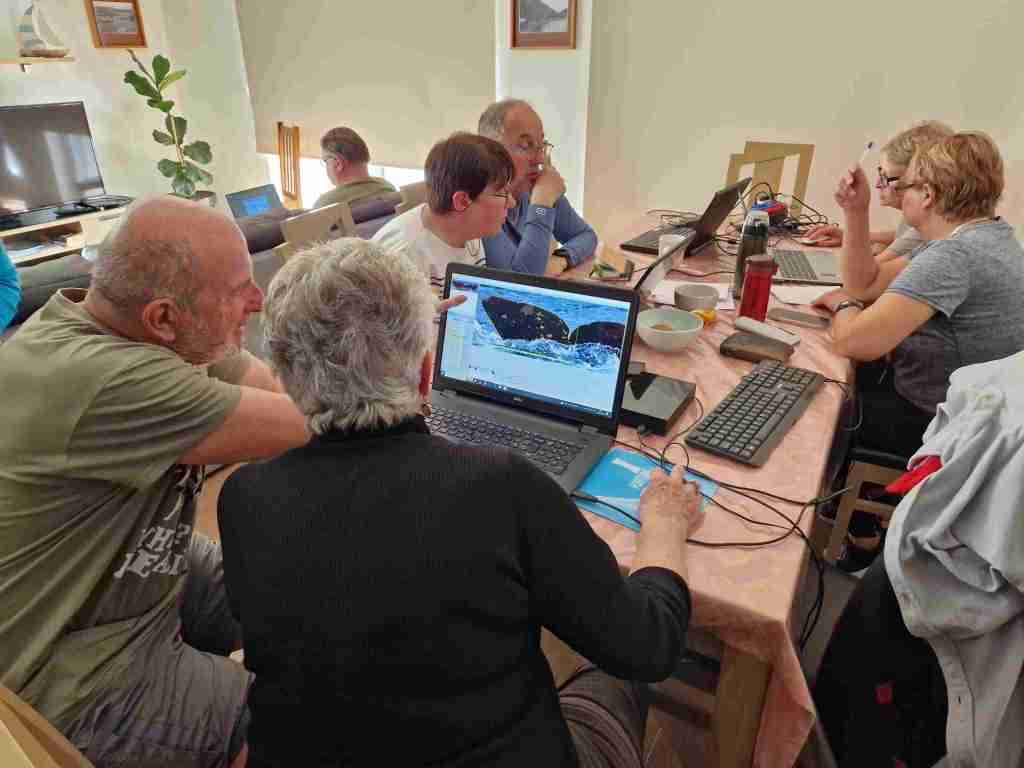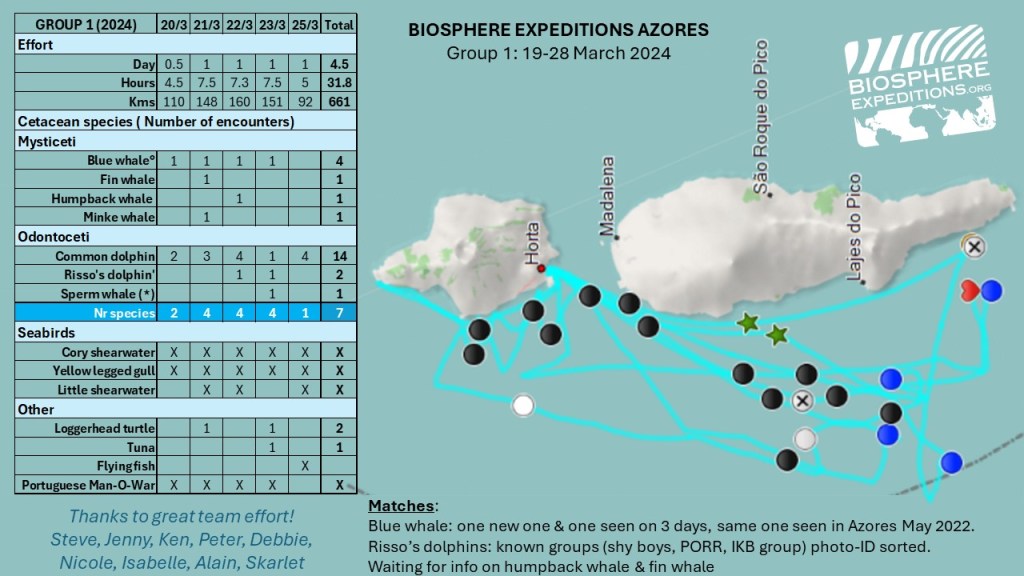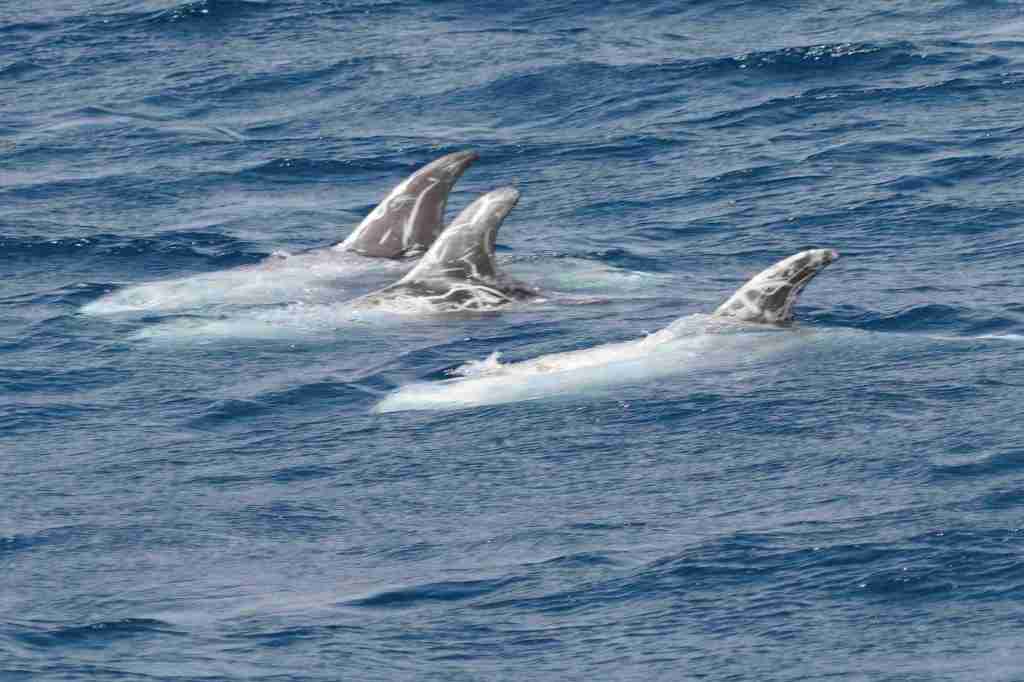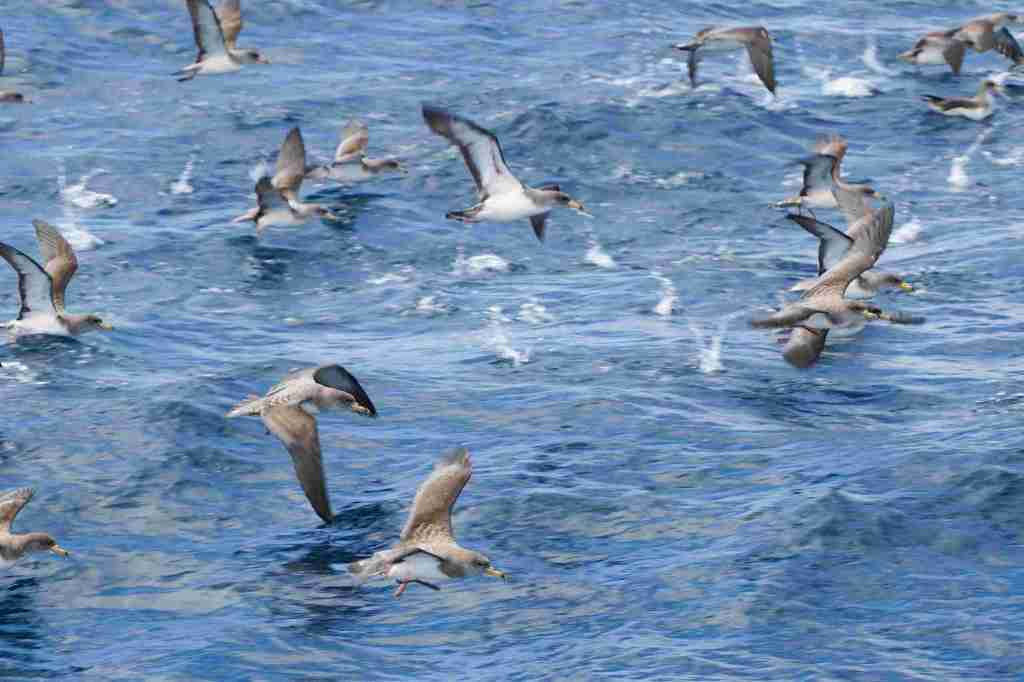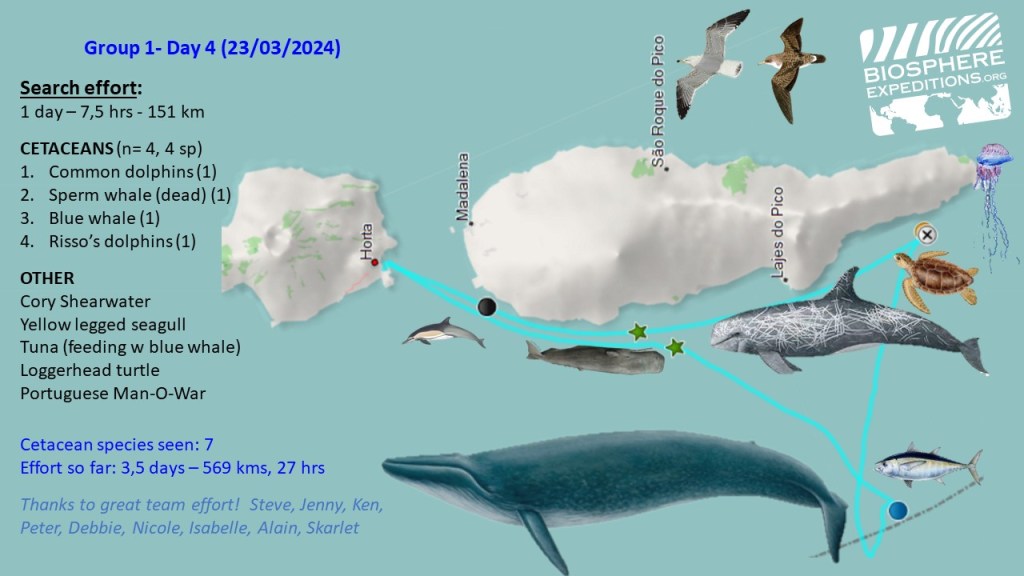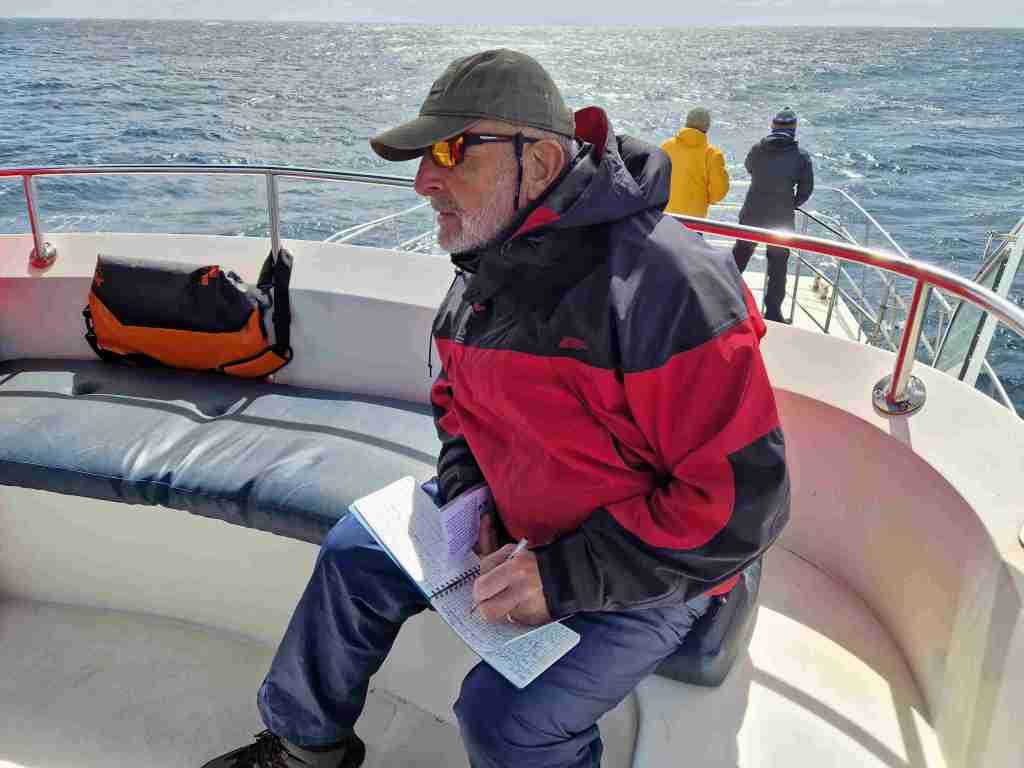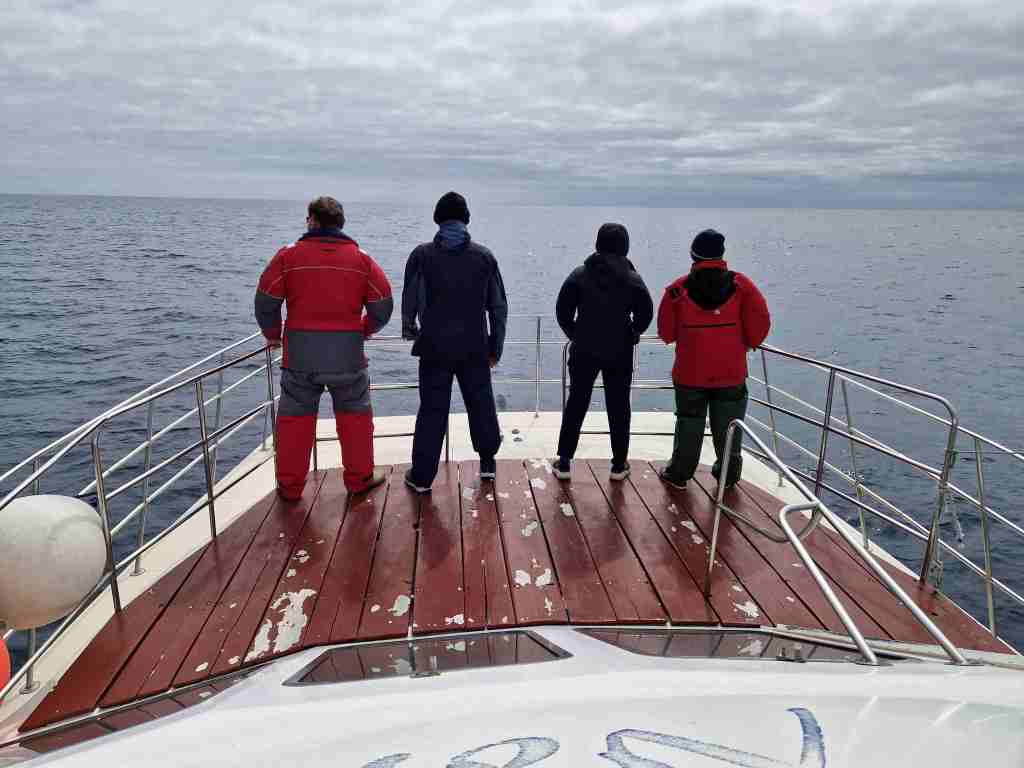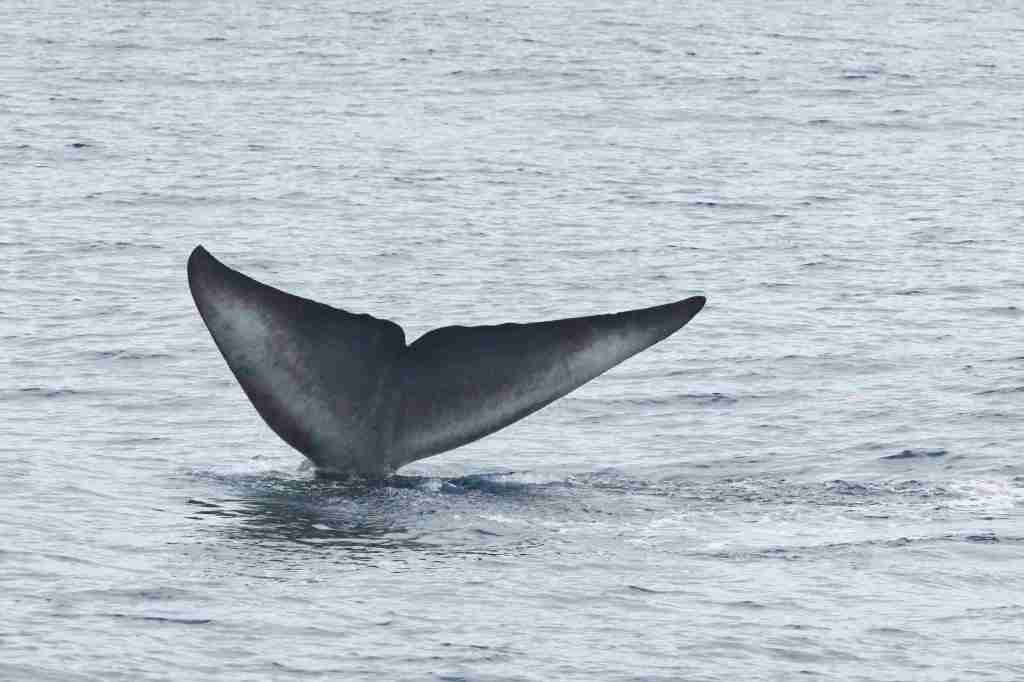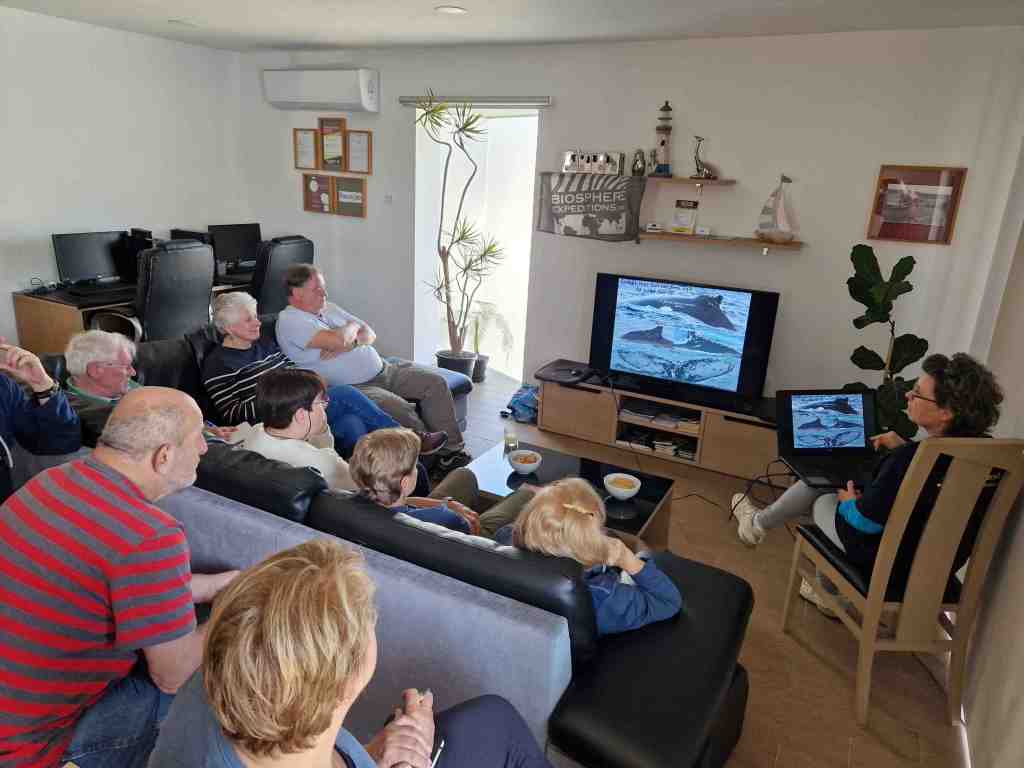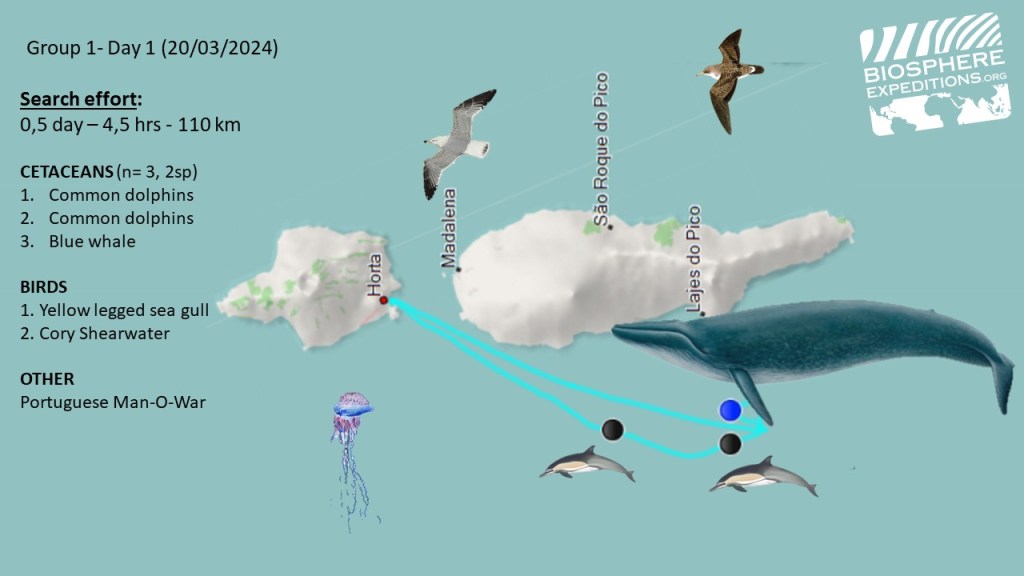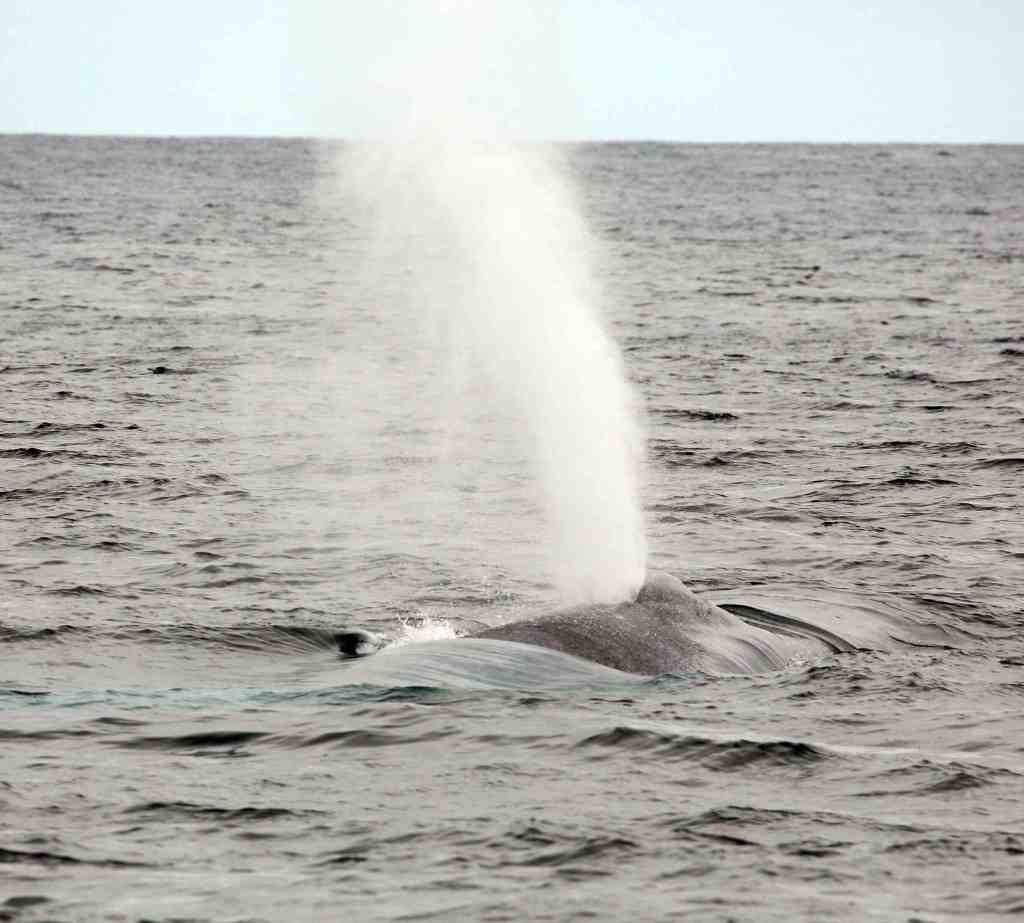Update from our marine conservation volunteering holiday in the Azores archipelago, working on whales, dolphins and turtles
Finally, on the last two days at sea, we had some better weather. Wednesday was clearly a baleen whale day with impressive blue whale and fin whale sightings. According to our records, the blue whale we saw was already known to us with sightings back in 2018 and 2023. On this occasion, he treated the team to a nice ‘krill poo’ perfume, confirming feeding behaviour.
During our goodbye survey on Thursday, we had no fewer than 13 encounters . To everyone’s delight, especially Lisa’s, we had five sperm whale encounters, several with calves. This time they were being cooperative by diving to feed at depth where we then managed to get photo-ID shots of five flukes. These were matched on the programme Happywhale in the evening where we discovered that ‘1018’ has been around since 1988! Thirty-five years is quite remarkable. Another sighting matched with ‘6165’, who was last seen here in July 2018. There were four encounters with common dolphins, some striped dolphins off in the distance and the first group of bottlenose dolphins for our third group. Like on our first day out, we saw a blue whale again, confirming they have been around during the five weeks of the expedition. Clearly there is enough food for them to linger before they migrate further. An excellent day to conclude this 18th expedition!
With that, we wrap up the 2024 Azores Biosphere Expeditions. Despite the challenging weather conditions, we managed to record a fair amount of data that without Biosphere Expeditions, would not have been collected.
The 2024 highlights in a nutshell:
> We’ve deployed three teams into the field, comprising of 29 expeditioners from ten different nations, spanning multiple decades, from both sides of the Atlantic and beyond
> We completed 16 days at sea, totalling 86 survey hours, covering over 1500 km of ocean
> We’ve collected data on nine different cetacean species (five whale and four dolphin species), and one turtle species (eight individuals)
> We had a total of 92 encounters with cetaceans, about one encounter for every sea survey hour
> We notched up 20 positive whale IDs, including several re-sightings of sperm and blue whales, but also some new flukes and dorsal fins – i.e. species never recorded before
> The local expert informed us that our Risso’s dolphin sightings include several of the residents groups seen between Faial and Pico. More information on the bottlenose dolphin encounters will follow.

The above is only a first glimpse of the raw data, which Lisa will analyse further and publish in Biosphere Expeditions’ annual expedition report online. Studying cetaceans takes patience and perseverance, one photo-ID shot at a time. The power of these datasets build over time, through resightings in the Azores, but also north- and southwards, giving insights into migration patterns, feeding and breeding areas and group compositions. Every year, more data gets added to the photo-catalogues, elucidating more valuable information, which can be used to steer cetacean conservation.
Expeditions help us in more ways than mere data collection. They are about the inspiring people we meet, the group dynamics and teamwork. I want to thank everyone for their positive attitude dealing with the rough weather conditions, making our schedule quite unpredictable. Thanks to you all for travelling here and contributing your time, effort and lots of enthusiasm for cetacean citizen science. I hope you enjoyed it as much as I did.
To conclude, I would like to take the opportunity to thank Norberto Divers and our various caterers – whose food kept us going on long sea days. Our skippers Bruno and Norberto made sure we returned to port safely every day. Our collective thanks goes to Lisa, our cetacean scientist, who shared a wealth of knowledge on these fascinating species, giving us a much greater insight into their life history. Final thanks go to our new hosts, Mario and Silvia from the Monte de Guia Alojamentos, a new comfortable and modern research base in Horta, where we will be returning with pleasure. Obrigada!


